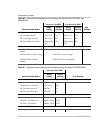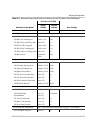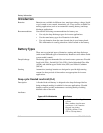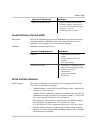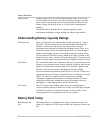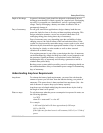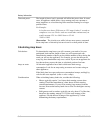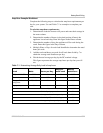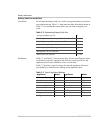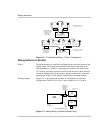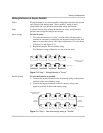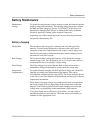
Battery Information
C–6 976-0043-01-02
Time and power The length of time a load is operated will affect the power draw. In some
cases, an appliance which draws a large wattage may not consume as
many amp hours as a load drawing fewer watts but running for a longer
period of time.
For Example:
A circular saw draws 1500 watts or 12.5 amps. It takes 5 seconds to
complete a cross cut. Twelve such cuts would take a minute and you
would consume 12.5 A x 0.016* hour = 0.2 Ah
*1/60 = 0.016
Observation The circular saw, while it draws more power, consumed
fewer amp hours of electricity because it ran for a short period of time.
Calculating Amp Hours
Calculations To determine the amp hours you will consume, you need to list your
anticipated loads and the length of time you will operate each one.
Determine the number of hours per day and the number of days during the
week you will use the appliance. For example, you use the microwave
every day, but a breadmaker only once a week. If you use an appliance for
less than an hour, express the time as a decimal portion of an hour.
Amps to watts All electrical appliances have labels which state their energy
consumption. Look for an amps rating on motors and a watts rating on
other appliances.
If the label plate has expressed power consumption in amps, multiply by
volts for the watts required. (watts = volts x amps)
Considerations When calculating battery bank size, consider the following:
• Motors typically require 3 to 6 times their running current when
starting. Check the manufacturer’s data sheets for their starting
current requirements. If you will be starting large motors from the
inverter, increase the battery bank size to allow for the higher start-up
current.
• Refrigerators and ice-makers typically run only about 1/3 of the time,
therefore, the running wattage is 1/3 of the total wattage of the
appliance. Divide the total wattage of the appliance by 3 when
determining the battery requirements.



